Van security is a vital topic for companies big and small. A break-in or a straight theft can have major consequences, often amounting to thousands of pounds in lost tools or productivity. We’ve put together this van security guide to help reduce the chances of the worst happening.
We’ve spoken to industry experts and listened to van owners on forums to bring you this guide, which rounds up ways you can protect both your van and everything inside it, be that goods, tools or equipment.
Is van theft a serious problem?
Research suggests that van theft rose 81% between 2015 and 2019 and, by 2030, that figure is predicted to double. So, yes, van theft is a serious issue.
What’s more, according to research by Volkswagen Commercial Vehicles, more than a quarter of van drivers (27%) experienced tool theft in the 12 months leasing up to September 2021, while a recent report from Logistics UK reveals that more than a third of British businesses had a van stolen in 2020.
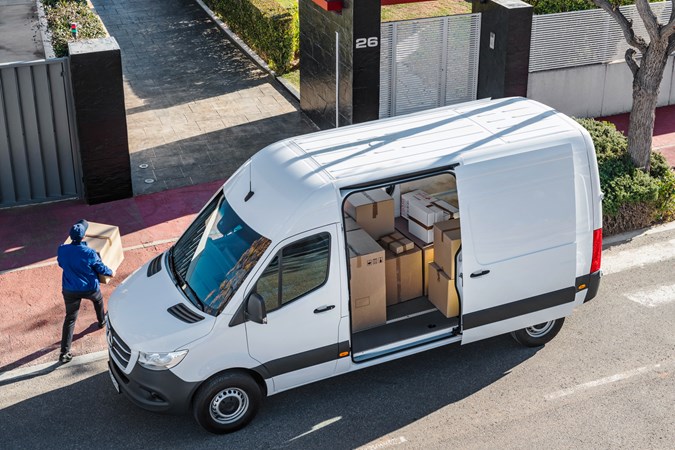
To put a price on those claims, Logistics UK claims the average business cost of can content theft is £4,250, with VW reckoning that the resulting downtime amounts to £550 per day per van – an estimated £15 million in total per year. Yet that same survey uncovers that at least half of van drivers (57%) still leave all their gear in their van overnight. And nearly a third (31%) haven’t installed any additional security measures.
Which is where this van security guide comes in.
What needs protecting when it comes to van security?
It’s probably obvious, but there are two main things to consider when it comes to van security – theft of the van itself and theft of the van’s contents. So we’ve also split this guide into two:
> Preventing theft of the whole van
> Preventing theft of the van’s contents
Some of these preventative measures will cost you nothing – and equally, the very latest vans do have some clever tricks built-in. But if you’re serious about van security then be prepared to spend some money.
Van security: preventing theft of the whole van
Worried about your whole van being stolen? Try these top tips.
1. Look after the keys
We’ll come to additional van security locks and similar upgrades below, but the easiest way to steal a van is with the key. So make sure you know where your van key is at all times.
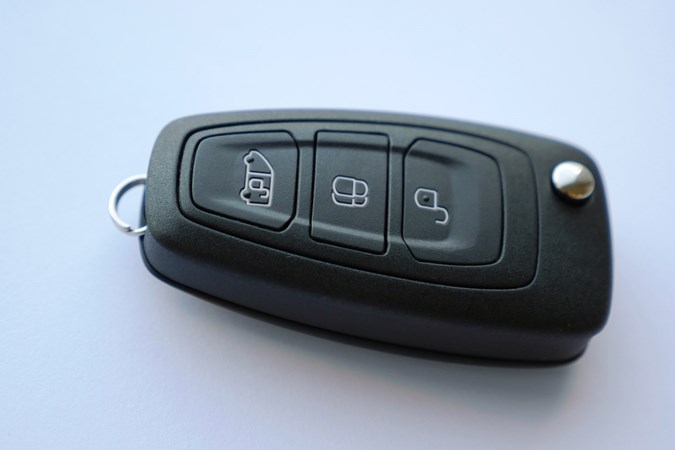
With keyless entry and keyless start becoming increasingly common in commercial vehicles, you now also have to consider ‘relay attacks’. These use an electronic device to extend the range of the wireless signal from the key to van, allowing thieves to enter and start the van while the key is still in your house – or pocket.
A relatively inexpensive faraday pouch or key box easily solves this issue.
>> Keyless van theft is on the rise
>> Parkers’ favourite RFID and faraday pouches for key fobs
2. Old-school physical deterrents are still effective
Physical theft-prevention devices such as steering-wheel locks, pedal locks and gearlever locks – all also known as clamps – may look like they’ve escaped from the 1990s, but they’re still an effective deterrent against van theft. You can even add your own wheel clamp as well.
Buy the best quality you can afford, making sure they’re Thatcham-approved, and at the very least these will slow the criminals down, potentially skewing the risk/reward ratio in favour of them not bothering with your van at all. The specialists at TVL Security say their PedalBox (below) is a true ‘belt and braces’ approach, and claim it has never been beaten.
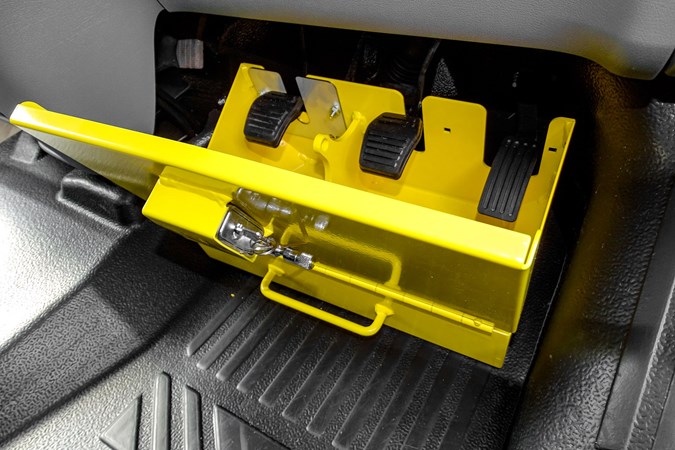
Don’t forget to actually use these additional locks, though. Nothing will hurt more than your van going missing because the Disklok was lying on the passenger seat instead of being attached to the steering wheel.
>> The best wheel clamps – on Parkers
3. Fit upgraded alarms and immobilisers
Some vans come with factory-fitted alarms, some don’t – but you can always make life harder for criminals by fitting a high-quality aftermarket solution, as it adds another level of complexity to the task of stealing your van.
Look for Thatcham-approved systems and for installers who are reviewed well by other van owners. Ask to see examples of quality of previous work. And remember that an alarm only alerts you to a break-in – it’s the immobiliser that prevents the van starting, so don’t skimp on this part.
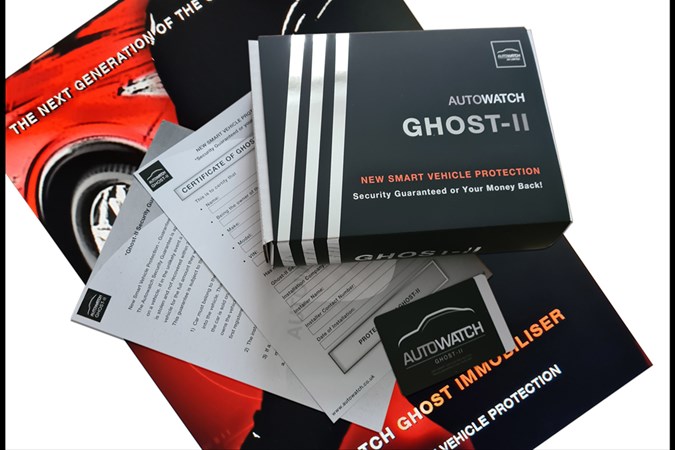
Clever modern solutions include ‘CAN bus immobilisers’, such as the Autowatch Ghost. These integrate into your van’s electronics, and only allow it to be started if the correct combination of normal steering-wheel or dashboard buttons is pressed first.
Also consider an OBD port lock or have this ECU interface professionally moved.
4. Plan your parking, consider CCTV and home security
Parking your van in a well-lit area where a lot of people can see it will make opportunistic thieves think twice. Park it in clear view of a CCTV camera system, and even more-methodical criminals may reconsider their plans.
Some savvy van owners also take advantage of modern wireless home security systems. As well as standalone wireless alarms, such as the Vanmate detailed below, you can install wireless cameras and contact sensors on your van can be linked up to your house alarm whenever the van is parked nearby.
If setting off the whole house doesn’t discourage a potential thief, we’re not sure what will. Plus, you’re unlikely to sleep through the sound of it.
5. Use all the available tech and/or fit a tracker
A GPS tracking device won’t stop the van being stolen, but it could help you get it back again. These range from simple, inexpensive passive devices to full subscription services. Go for the latter if you can. They need to be installed properly, too. Tracker is the best-known brand name, but there are others.
As vans get more and more built-in connectivity, many modern vans already have a smartphone app that includes a GPS location system – so make sure whatever’s already available is downloaded and activated on your smartphone.
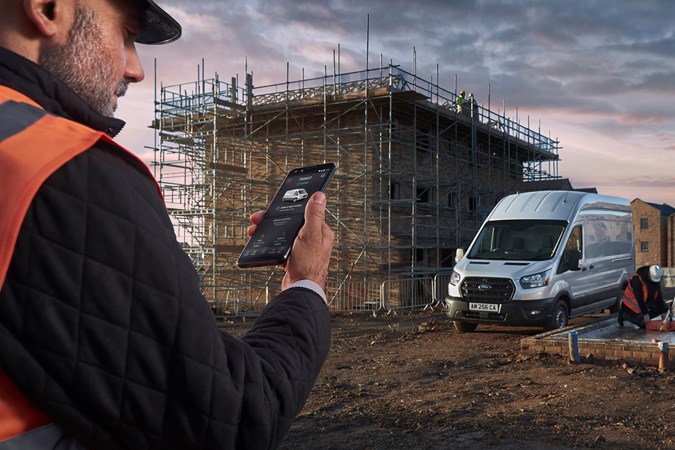
Some manufacturers, including Ford, take further advantage of this connectivity by giving you the option to have their app alert you to any attempt to open or start the van – even if it’s done with a key. Our article on Ford SecuriAlert goes into greater detail.
Such apps usually allow you to check the vehicle is locked and remotely lock it as well.
>> The Parkers guide to car trackers
Van security: preventing theft of your van’s contents
From lockpicks to power tools, smashed windows to ‘peel and steal’ attacks, criminals who only want what’s inside or on the van have a worrying number of options. Here’s what you can do to protect your property and fight back.
1. Upgrade the locks
There are easily available lockpicking tools to tackle most standard manufacturer-fitted van locks, so swapping these for harder-to-crack aftermarket van locks – such as the dealer-fit RepLock for Ford Transits – is a no brainer. But that’s just the starting point.
In addition you can armour the lock areas to prevent drilling attacks. Van door security plates deal with model-specific vulnerabilities, as do van wiring loom guards. And you can fit other types of lock. The most common upgrades are slam locks and deadlocks, now increasingly available with hook lock mechanisms.
Slam locks automatically lock the van when you shut the doors, so you don’t have to remember, while deadlocks are harder to pick as they don’t have a spring mechanism. Whatever the type, look for Thatcham-approved locks, as these may even reduce your insurance premium where fitted.
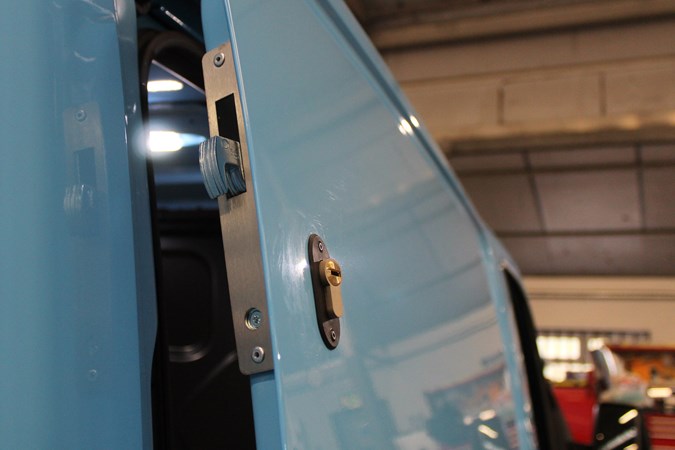
We recommend professional installation, and careful placement. Hook lock catches in the correct areas can prevent thieves ‘peeling’ open the upper door panels where the thin metals used on current vans can often be exploited.
Some suggest that too much visible security may make criminals more interested in what you’re trying to keep safe inside. But if you really need to keep people out, you could consider something like the TVL Security ArmourShell, which has interlocking parts that ‘can’t be forced apart’.
2. Protect your valuables
The only sure way to prevent something being stolen from your van is to not leave it inside. But this isn’t always very practical, particularly when it comes to tools and equipment you’re constantly using. Instead, consider an extra layer of protection for your van tool security.
This approach can range from an on-board van security box – such as lockable tool boxes and small van safes, also known as tool vaults (Van Vault is one of the most recognised brand names) – to a full van security cage. With internal locks and extra metal work, this is like having a van within your van.
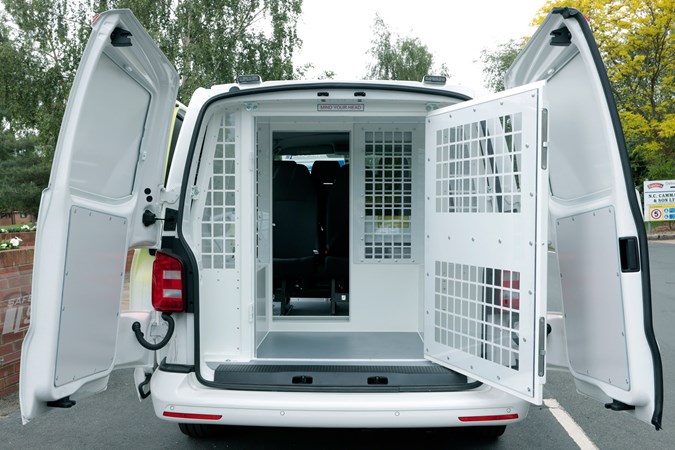
There are also simple-to-fit electronic devices that can warn you of a break-in, such as the Vanmate alarm. This inexpensive (under £40) battery-powered device can be fitted in minutes, has a loud 125dB alarm, and is claimed to go off as soon as a rear door is opened.
Another deterrent to consider is a dashcam that records inside as well as outside. But this will only be helpful if it sends video wirelesses to the cloud via mobile Wi-Fi. After all, it will be useless if the footage of the criminals in action is stolen alongside everything else.
As with everything else, you can’t expect these things to give you 100% theft prevention. But they will slow the criminals down, which may give yourself or passers-by the chance to contact the police, or cause the thieves to give up entirely.
3. Prevent smash and grab van theft
If your van is left unattended in a quiet area, opportunistic thieves may simply try and smash a window to gain access to the interior. Inexpensive window protection film can make this more difficult by holding the smashed glass in place and preventing it splintering into pieces – the best options go on the inside and outside.
Unless you can use them to show there’s nothing inside, vans with windows in the rear are best avoided altogether for these reasons. A proper, fixed bulkhead will prevent easy access to the load area from a broken window in the cab.
Also consider disabling any buttons in the cab that can unlock the load area without a key present. Many van manufacturers have issued software updates for exactly this issue, so make sure your van is running the latest. And as above, a faraday box or pouch can prevent relay attacks taking advantage of keyless entry systems.
There’s also no harm in adding a ‘no tools are left in this vehicle’ sticker if you haven’t got one already.
4. Keeping your cat safe – how to secure items on the outside of your van against theft
Catalytic converter theft is on the rise, as the precious metals inside that clean up your van’s emissions can be worth a lot of money (making them expensive to replace, too). Vans and especially pickups are particularly vulnerable to this kind of theft, as they have higher ground clearance than regular cars, making access to the underside easier.
Cat locks and cat clamps aim to prevent this kind of crime – and although they sometimes seem to be as expensive as the thing they’re trying to save, don’t forget about the impact on your business if you can’t use your van because the catalytic converter has been stolen.
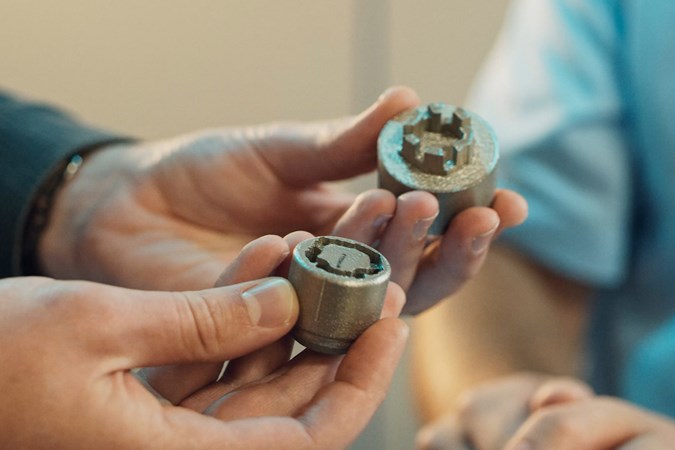
Other outside anti-theft measures to consider are ladder clamp locks, locking pipe carriers and locking wheel nuts. On many vans the spare tyre is easily accessed under the van, so a spare wheel lock is also a must. Protecting these things is protecting your business.
5. Pay attention to how and where you park
As with theft of the whole van, where you park can make a big difference to how vulnerable your van is to content theft. For instance, a top tip from other van drivers is to park close to walls or other obstructions that will prevent would-be thieves getting access to vulnerable areas on the van. If they can’t open the doors because they’re too close to something else they may not be able to get in at all.
If this is not possible, go for brightly lit areas that are busy enough to make a break-in risky. Look for CCTV cameras and try and park in view of them – or fit your own, perhaps linking up to your home alarm and security systems.
Van security: summary
The most important thing about van security is to use it.
From remembering to lock the van to activating the alarm and immobiliser systems, if you’ve gone to the trouble of having extra van security fitted make sure you and your drivers know how it works and that it’s part of the routine whenever you set foot away from the vehicle.
Frequently asked questions about van security
Is DIY van security a good idea?
Plenty of you will be handy with the tools necessary to personally handle security upgrades on your van, no doubt. The advantage to a professional installation is the experience they should have – knowing the best locations and the correct method for the items they sell.
If you do decide to go pro, make sure you check the reputation of your chosen installer carefully. Google for reviews, ask on forums and Facebook groups, and see if the fitters can show you examples of previous work.
Is sign-writing good or bad for van security?
Having a sign-written van is a great way to advertise your business – but it will also tell would-be thieves what might be inside.
On the other hand, a sign-written van may be less appealing to someone looking to steal the whole van, as it is much more obviously identifiable if the signage can’t be easily removed or covered.
What is ‘peel and steal’ van theft?
‘Peeling and stealing’ is used to describe theft from a van where criminals have used brute force to ‘peel’ open the top of a door in order to get access to the load area.
Many modern vans are built as light as possible to maximise payload, and this has resulted in thin, vulnerable panels in places, particularly the doors. With knowledge and a little strength, these panels can be bent open at the top like a giant metal banana.
Hook locks and reinforcement can be added to these areas to prevent this kind of intrusion.
What’s an OBD port and why do I need to secure it?
An OBD port is the interface between your van’s electronic control unit (ECU) – its brain – and the outside world. Dealerships and mechanics use it to diagnose problems and update the on-board software.
It can also be used for criminal purposes, though, including starting the van without a key. For this reason it may be wise to have the OBD port moved away from the factory location would-be thieves are familiar with, or to secure it with a locking device.
What sort of insurance do I need to protect my van?
All forms of insurance will protect you against theft of the van itself (though often with a policy excess), but it is important to check that you are covered for the contents of the van as well.
If your livelihood relies on your tools, make sure you have van tool theft cover. If you’re a courier or similar delivery driver, you need courier insurance, which covers you for ‘hire and reward’ driving a ‘goods in transit’ – the stuff you’ve got in the back.
Also be sure that if you use your van for work you have business van insurance and not private van insurance – and vice versa if you only use your van like a car.
Our sister company mustard.co.uk may be able to help you find a competitive quote via its van insurance comparison service.
Should I keep a list of everything in my van?
An up-to-date list of the contents of your van and marking high value items with a unique code in invisible UV pen may save you a lot of grief should the worst happen.
Keeping a detailed record – ideally with serial numbers – will help you with any necessary tool-related insurance claim. It will also make it easier for the police to identify your property whenever stolen tools are recovered.
A specific UV marking will remove any doubt that recovered items are yours. You could use your mobile number, or a combination of your initials and your postcode – anything that can be clearly identified as unique to you.
Just so you know, we may receive a commission or other compensation from the links on this website - read why you should trust us.






























